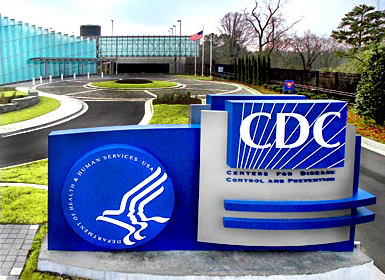What Chronic Pain Really Costs
/By Pat Akerberg, PNN Columnist
I recently came across yet another dehumanizing equation about the cost of pain solely based on economic factors such as healthcare costs and loss of employee productivity. What troubles me is that the human side is missing – the untold toll pain takes on people who are afflicted.
I set out to search for any published United States studies on the topic that address the human dimension of pain too. To my dismay, a 2009 article in the journal Reviews in Pain was the most recent one I could find that discussed the economic and quality of life impacts of pain.
A handful of other publications that acknowledge the detrimental effects pain can have on a human life were originated in other countries.
In the 2009 article, I was struck by this powerful closing quote taken from an editorial penned by Henry McQuay, professor of Anaesthetics at Oxford University:
“Chronic disease comes low on the political priority list, and chronic pain just gets forgotten. The burden for the sufferers, their families, and society is substantial and merits better treatment. The mark of a gracious society is how it treats those with least voice. That chronic pain puts people at the bottom of the pile is precisely why we should be agitating on their behalf for a fairer share of the medical resource cake.”
The nine-year gap between that plea and current reality is shameful, given the prevailing anemic attitude in the U.S. that champions the under-treatment of pain.
From a humanistic perspective, pain exacts a much steeper price than just the collective economics that get reported. Given short shrift are the countless human beings behind those collective economics who are paying dearly in pain’s wake.
A generic equation about what pain costs in dollars fails to factor in serious quantity and quality of life dimensions or give them the weight and relevance they deserve. The result is lifeless and one dimensional. It sucks the dignity and human cost of pain right out of it.
The real bottom line about pain has to include the pervasive impact pain has on a person’s quantity and quality of life; such as lost time, lost energy/capacity, lost opportunities and sacrifices, altered self and relationships, financial losses and more.
Lost Time
Because the losses in every aspect of my life are ongoing, the full cost is unknowable. But given that life is most precious and our time here invaluable; lost time is perhaps the most valuable, irretrievable cost to our lives.
It’s been nine years since my surgery for trigeminal neuralgia failed, permanently damaged my nerve and forever sensitized my central nervous system. That translates to debilitating facial pain that delivers volleys of lightning strikes to the roots of my teeth when I talk or chew.
Losing nine years of life quantity and quality is an unaffordable loss for me. It’s no wonder then that no one likes to talk about the subtraction effect that ongoing pain has on his or her lifetime.
Lost Energy/Capacity
Energy loss is another way to calculate the price of living with an intractable pain condition. Christine Miserandino writes about measuring her energetic capacity by how many spoons she has to spend in any given day. Her theory is that when our spoons are gone; there’s no energy left to use and downtime is essential.
I find that the energy drain of unrelenting neuropathic pain, coupled with life’s daily demands, often render me out of spoons by about 2 pm each day. That means I start many days in arrears.
Lost Opportunity and Sacrifices
There’s a hefty price tag attached to the many potential opportunities that intractable pain stops dead in their tracks.
Sometimes grieving over what might have been can be just as difficult as coping with what is.
If you had to end your career early, curtail socializing, give up traveling, limit driving, miss important time with family/friends, or narrow your operating world significantly, then you understand sacrifice, limitations and/or lost opportunity.
Altered Self and Relationships
A difficult personal price I’ve had to pay for pain is wondering who I might have become if I had never been limited by it.
The other half of that is losing prized parts of ourselves, while being left with less desirable substitutes. It really hasn’t been a fair exchange.
The underlying hits to heart and soul add up too for the courage, fortitude and considerable patience it takes to try to find ourselves again, craft a new normal and reach some level of acceptance.
The cost of what has changed about me has also spread outward to my significant others.
Financial Losses
We all know pain costs too much money that could have been spent on better things or even saved. While often coping with the stress of lost income, the bills for prescriptions, treatments and insurance quickly add up.
Not only does a protracted painful condition regularly send you a bill to be paid in full; when we’re overdrawn it has ways of challenging our will, perseverance, hope, faith, and even courage at times.
An unforgiving creditor, pain offers no grace period, understanding or consideration. It expects to be paid in time, energy, money or sacrifices, affordable or not.
Pain never skips a bill for what it takes, like some twisted accounting mistake.
Whenever some bureaucratic, administrative, regulatory, or government agency assumes that they actually know the full cost of pain, I’d like to send them a bill for repeatedly excluding the human costs of serious pain and doing little about it.
For starters, I’d charge for putting up with their half-baked equations that don’t tell the whole story, their biased and anemic pain treatment guidelines designed to under-treat pain patients and threaten doctors, and their unconscionable ignorance endorsing Tylenol for serious pain.
In fairness, it needs to be a bill that they can’t afford to pay either.
Pat Akerberg suffers from trigeminal neuralgia. Pat is a member of the TNA Facial Pain Association and serves as a moderator for their online support forum. She is also a supporter of the Facial Pain Research Foundation.
The information in this column should not be considered as professional medical advice, diagnosis or treatment. It is for informational purposes only and represents the author’s opinions alone. It does not inherently express or reflect the views, opinions and/or positions of Pain News Network.































